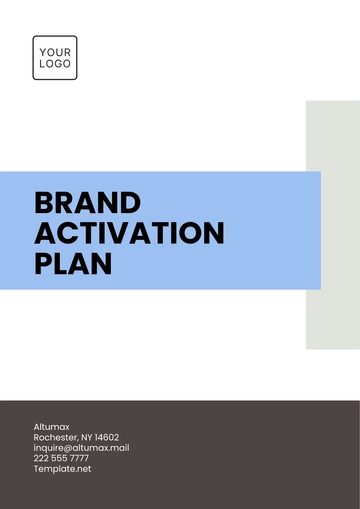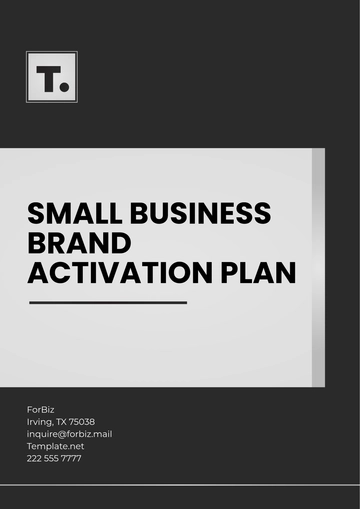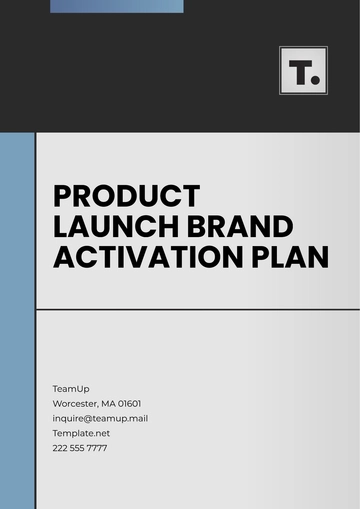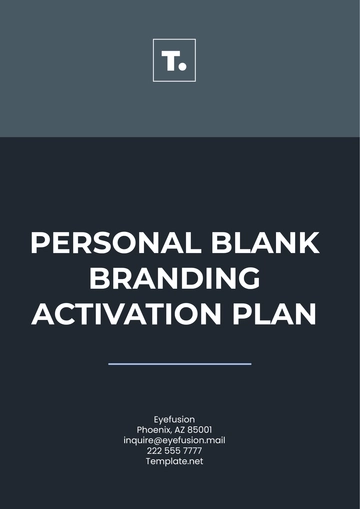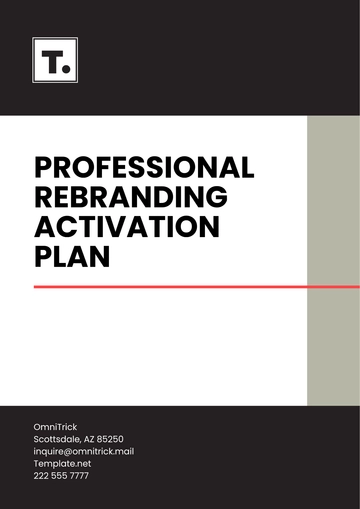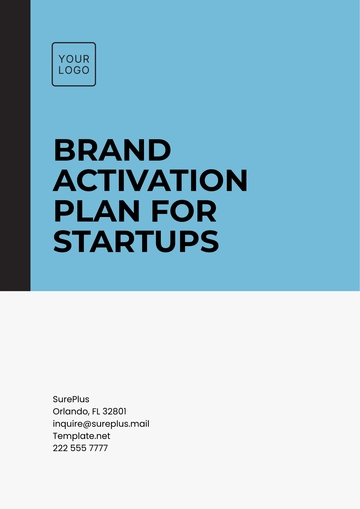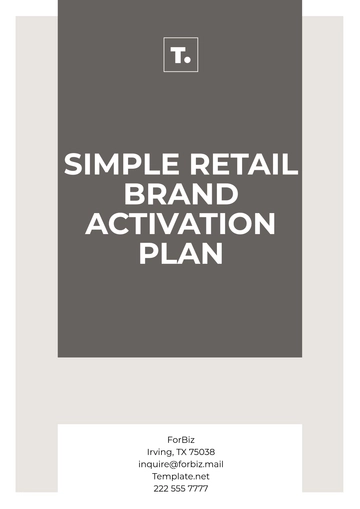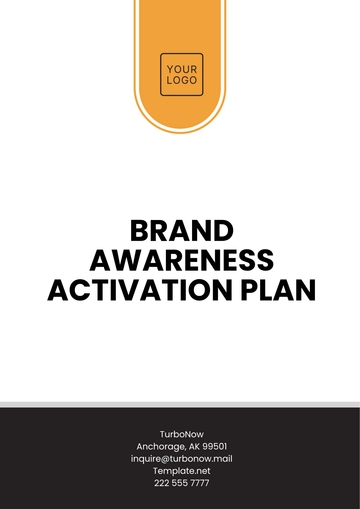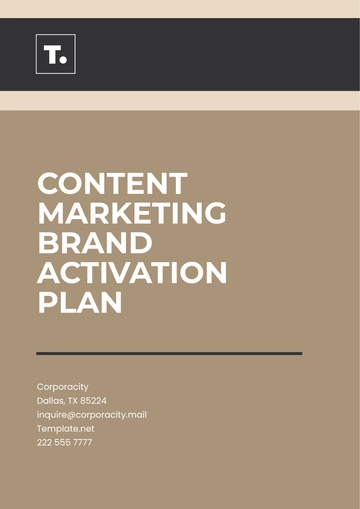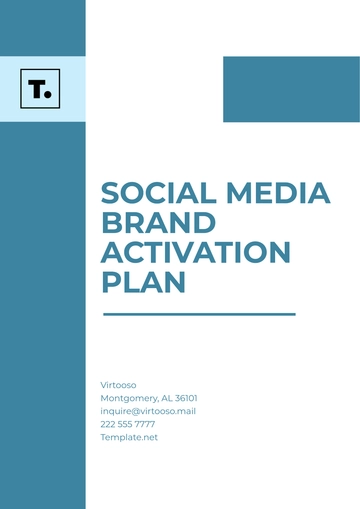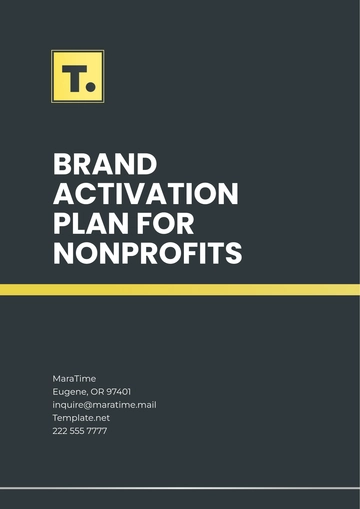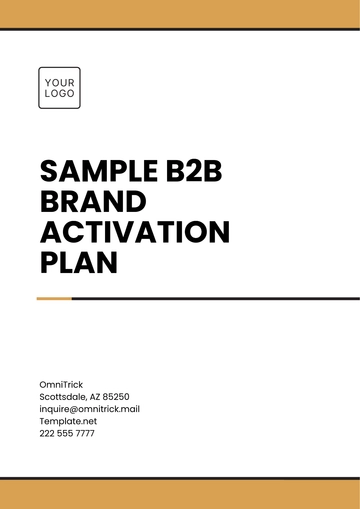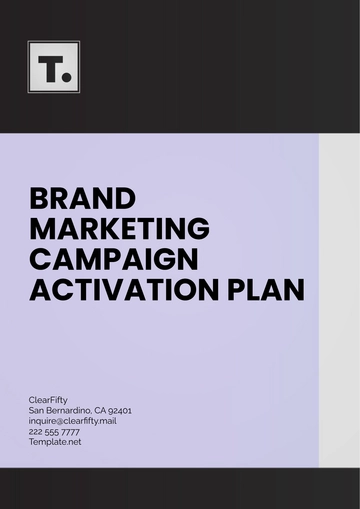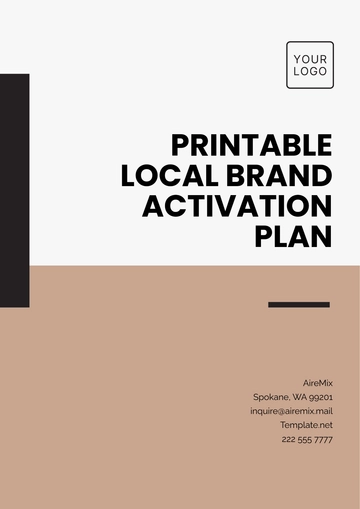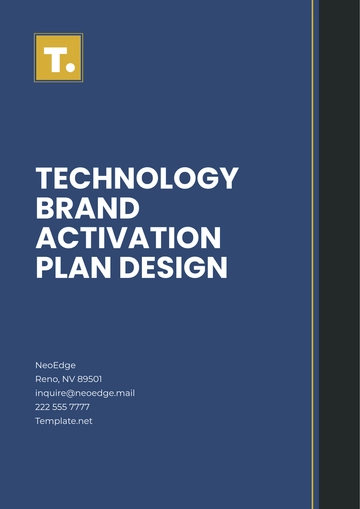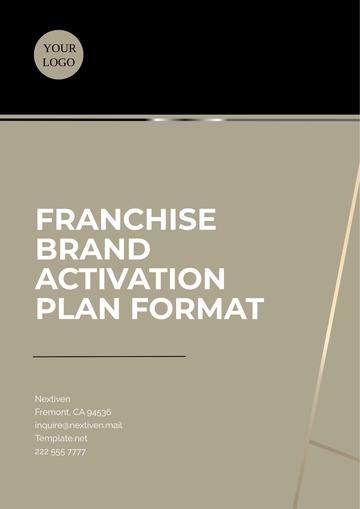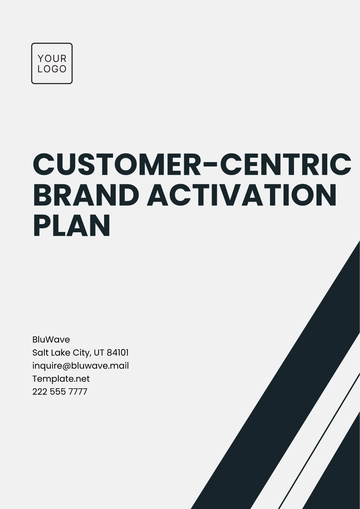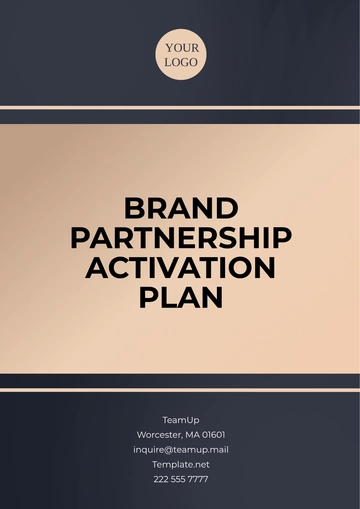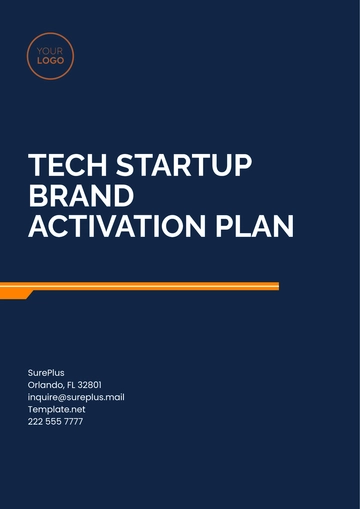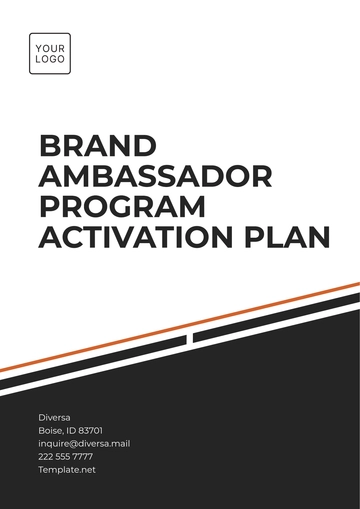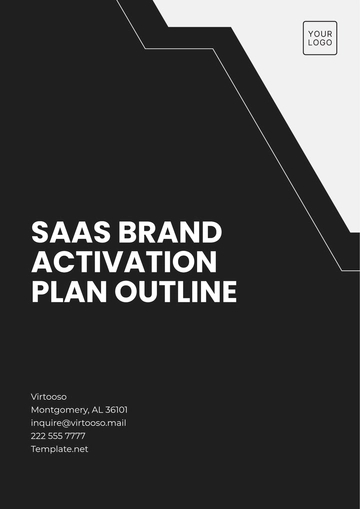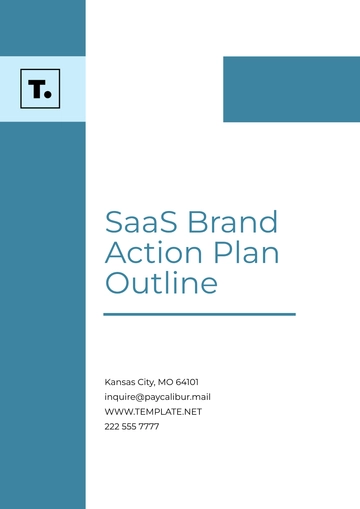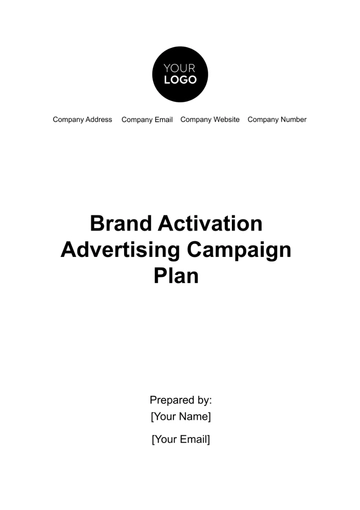Free Simple Retail Brand Activation Plan
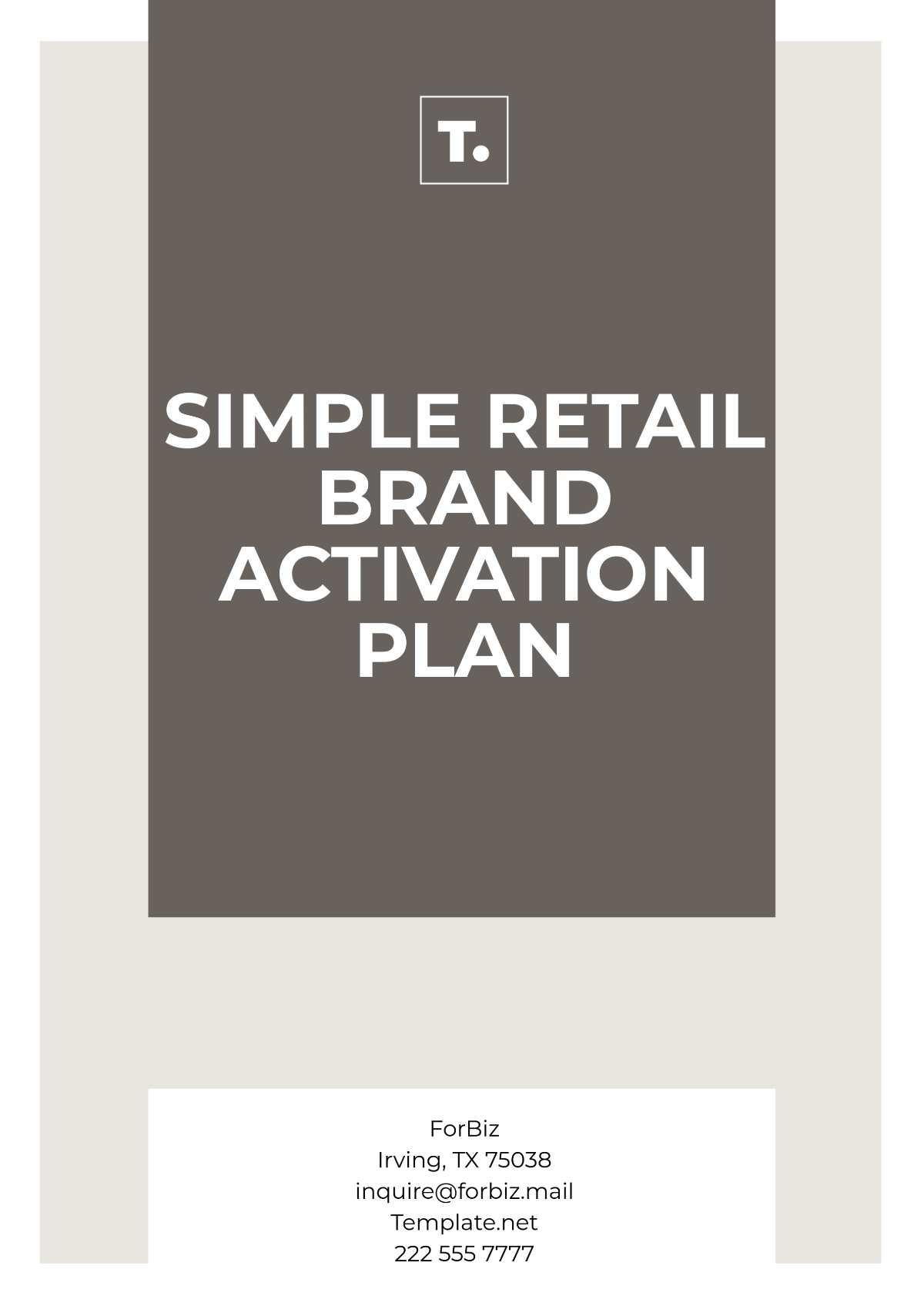
Prepared by: [Your Name]
Company: [Your Company Name]
Date: [Insert Date]
1. Introduction
Retail brand activation is a strategy used to increase awareness, drive consumer engagement, and ultimately boost sales. This plan outlines the steps needed to successfully activate a retail brand in a store environment, creating an impactful and memorable experience for customers. Our goal is to build strong brand recognition, enhance customer loyalty, and promote specific products or services through in-store activations and campaigns.
2. Objectives
Increase brand awareness and visibility.
Drive foot traffic to retail locations.
Engage customers through interactive experiences.
Increase sales of featured products.
Build long-term brand loyalty and positive associations.
3. Target Audience
Our target audience consists of:
Primary: Shoppers aged 18–45, typically familiar with the brand but seeking deeper engagement.
Secondary: New customers and potential buyers who might have never interacted with the brand.
Demographic information:
Middle to high-income earners.
Interested in lifestyle products or services (specific to the brand).
Active on social media and likely to share experiences.
4. Strategy Overview
To effectively engage our target audience, the following strategies will be implemented:
Interactive In-Store Displays: Creating attention-grabbing setups that invite customers to interact with the brand.
Product Sampling and Demos: Allow customers to experience the brand’s products first-hand.
Limited-Time Offers and Discounts: Promotions tied to the activation, including discounts, giveaways, and exclusive deals.
Influencer Partnerships: Collaborating with local influencers to promote the event and create buzz.
5. Activation Activities
In-Store Setup and Decor: Design the space with the brand's color scheme, logo, and products to create a vibrant and immersive environment.
Engagement Stations: Install different sections with activities such as product try-ons, live demos, or VR experiences.
Product Samples or Giveaways: Offer free samples or limited-edition items to customers who engage with the activation or make a purchase.
Interactive Social Media Challenges: Encourage customers to share their experiences on social media using a specific hashtag. This can include photo contests, polls, and product reviews.
Live Events or Guest Appearances: Invite influencers, brand ambassadors, or industry experts to engage with customers during the activation period.
6. Timeline
Pre-Activation (1-2 Weeks Prior):
Finalize event details, including influencer collaboration, product promotions, and design materials.
Promote the activation through email newsletters, social media, and in-store signage.
Train store staff on how to engage with customers and encourage participation.
Activation (Event Days):
Set up the in-store experience, ensuring everything is ready for launch.
Monitor engagement throughout the activation to ensure it is running smoothly.
Engage customers continuously through social media, giveaways, and influencer presence.
Post-Activation (1 Week After):
Analyze data to measure the effectiveness of the activation (e.g., sales lift, social media reach, foot traffic).
Send follow-up emails thanking participants and offering additional promotions to retain customer interest.
7. Budget
Activation Setup and Design: $10,000
(In-store decorations, display materials, signage, and setup)
Influencer and Guest Appearances: $5,000
(Fees for influencer partnerships, guest appearances, or live demonstrations)
Samples and Giveaways: $3,000
(Cost of producing product samples or exclusive items)
Social Media and Marketing: $2,000
(Paid social media promotions, email campaigns, and advertisements)
Miscellaneous Costs: $1,000
(Unexpected expenses such as transportation, contingencies, or additional promotional material)
Total Budget: $21,000
8. Success Metrics
Sales Increase: Target a 15-20% increase in sales of featured products during the activation period.
Foot Traffic: A 25% increase in foot traffic to the retail location.
Social Media Engagement: Aim for 500+ user-generated posts with the designated hashtag.
Customer Feedback: Achieve a 90% positive sentiment based on post-event surveys or online reviews.
9. Conclusion
This retail brand activation plan aims to create a dynamic and engaging experience for customers, increasing both awareness and sales while fostering a deeper connection with the brand. By blending in-store experiences, product sampling, influencer partnerships, and strong social media integration, this activation will drive measurable results and create lasting brand loyalty.
- 100% Customizable, free editor
- Access 1 Million+ Templates, photo’s & graphics
- Download or share as a template
- Click and replace photos, graphics, text, backgrounds
- Resize, crop, AI write & more
- Access advanced editor
You may also like
- Finance Plan
- Construction Plan
- Sales Plan
- Development Plan
- Career Plan
- Budget Plan
- HR Plan
- Education Plan
- Transition Plan
- Work Plan
- Training Plan
- Communication Plan
- Operation Plan
- Health And Safety Plan
- Strategy Plan
- Professional Development Plan
- Advertising Plan
- Risk Management Plan
- Restaurant Plan
- School Plan
- Nursing Home Patient Care Plan
- Nursing Care Plan
- Plan Event
- Startup Plan
- Social Media Plan
- Staffing Plan
- Annual Plan
- Content Plan
- Payment Plan
- Implementation Plan
- Hotel Plan
- Workout Plan
- Accounting Plan
- Campaign Plan
- Essay Plan
- 30 60 90 Day Plan
- Research Plan
- Recruitment Plan
- 90 Day Plan
- Quarterly Plan
- Emergency Plan
- 5 Year Plan
- Gym Plan
- Personal Plan
- IT and Software Plan
- Treatment Plan
- Real Estate Plan
- Law Firm Plan
- Healthcare Plan
- Improvement Plan
- Media Plan
- 5 Year Business Plan
- Learning Plan
- Marketing Campaign Plan
- Travel Agency Plan
- Cleaning Services Plan
- Interior Design Plan
- Performance Plan
- PR Plan
- Birth Plan
- Life Plan
- SEO Plan
- Disaster Recovery Plan
- Continuity Plan
- Launch Plan
- Legal Plan
- Behavior Plan
- Performance Improvement Plan
- Salon Plan
- Security Plan
- Security Management Plan
- Employee Development Plan
- Quality Plan
- Service Improvement Plan
- Growth Plan
- Incident Response Plan
- Basketball Plan
- Emergency Action Plan
- Product Launch Plan
- Spa Plan
- Employee Training Plan
- Data Analysis Plan
- Employee Action Plan
- Territory Plan
- Audit Plan
- Classroom Plan
- Activity Plan
- Parenting Plan
- Care Plan
- Project Execution Plan
- Exercise Plan
- Internship Plan
- Software Development Plan
- Continuous Improvement Plan
- Leave Plan
- 90 Day Sales Plan
- Advertising Agency Plan
- Employee Transition Plan
- Smart Action Plan
- Workplace Safety Plan
- Behavior Change Plan
- Contingency Plan
- Continuity of Operations Plan
- Health Plan
- Quality Control Plan
- Self Plan
- Sports Development Plan
- Change Management Plan
- Ecommerce Plan
- Personal Financial Plan
- Process Improvement Plan
- 30-60-90 Day Sales Plan
- Crisis Management Plan
- Engagement Plan
- Execution Plan
- Pandemic Plan
- Quality Assurance Plan
- Service Continuity Plan
- Agile Project Plan
- Fundraising Plan
- Job Transition Plan
- Asset Maintenance Plan
- Maintenance Plan
- Software Test Plan
- Staff Training and Development Plan
- 3 Year Plan
- Brand Activation Plan
- Release Plan
- Resource Plan
- Risk Mitigation Plan
- Teacher Plan
- 30 60 90 Day Plan for New Manager
- Food Safety Plan
- Food Truck Plan
- Hiring Plan
- Quality Management Plan
- Wellness Plan
- Behavior Intervention Plan
- Bonus Plan
- Investment Plan
- Maternity Leave Plan
- Pandemic Response Plan
- Succession Planning
- Coaching Plan
- Configuration Management Plan
- Remote Work Plan
- Self Care Plan
- Teaching Plan
- 100-Day Plan
- HACCP Plan
- Student Plan
- Sustainability Plan
- 30 60 90 Day Plan for Interview
- Access Plan
- Site Specific Safety Plan
